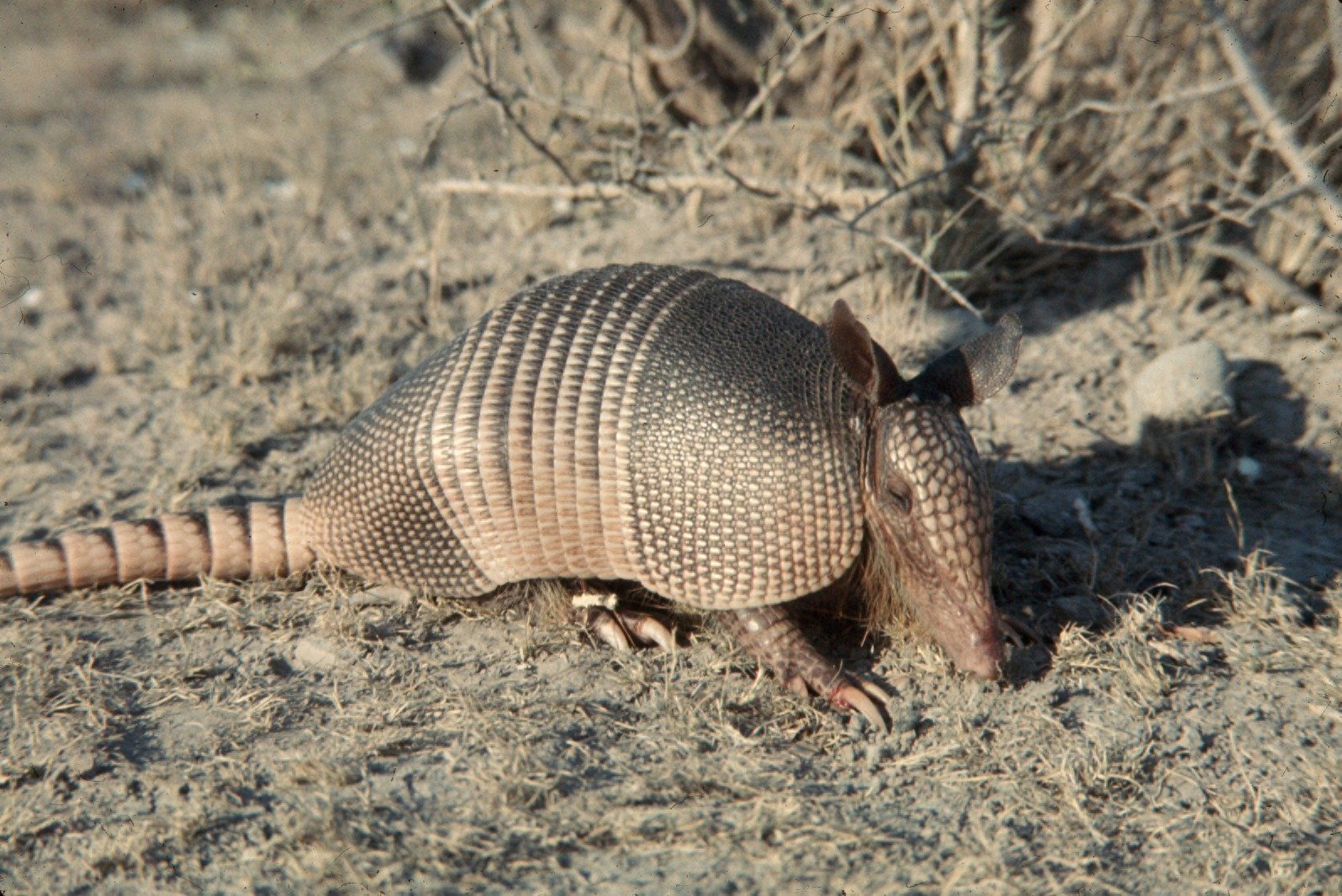Something strange is happening on the plains of Kansas. Picture this: you’re driving down a country road, and out of nowhere, a strange, armored creature scuttles across your headlights. No, it isn’t a prehistoric relic or a visitor from another world—it’s an armadillo! Once a rare sight, these quirky animals are now popping up everywhere in Kansas, leaving locals surprised, confused, and sometimes even a little unsettled. But why are armadillos suddenly marching north into the Sunflower State? The answer is as bizarre and fascinating as the creatures themselves.
The Unexpected Arrival of a Southern Wanderer
Just a few decades ago, spotting an armadillo in Kansas would have been the stuff of tall tales. Native to South and Central America, the nine-banded armadillo was historically a creature of the warm, humid south. Now, however, sightings have exploded in Kansas, with reports from city parks, rural fields, and even suburban backyards. This sudden arrival has caught many Kansans off guard, sparking both fascination and fear. The armadillo’s odd appearance—with its bony shell and tendency to jump when startled—has even inspired urban legends and social media buzz across the state.
Climate Change: The Great Enabler
One of the primary reasons for the armadillo’s invasion is the shifting climate. Winters in Kansas have become milder over recent years, with fewer deep freezes that would once have killed off these warm-weather creatures. Armadillos are highly sensitive to cold, so as the average temperature rises, their range steadily expands northward. Scientists point to climate records showing a clear trend: as frosty nights decrease, the armadillo’s playground grows. This is a vivid example of how even modest climate shifts can trigger surprising ripple effects in wildlife populations.
Highways to the Heartland
Armadillos aren’t just wandering north by accident—they’re following the ribbons of highways, railways, and cleared land humans have carved through the landscape. These corridors make it easier for armadillos to travel long distances, avoiding dense forests or impassable prairies. As Kansas’s infrastructure has grown, so too has the opportunity for armadillos to explore new territory. Observers have even noted that freshly built roads seem to act like armadillo superhighways, quickly drawing them into regions where they were never seen before.
Food and Survival: The Kansas Buffet
Kansas offers the perfect menu for a hungry armadillo. With its abundance of insects, grubs, and worms, the state’s soil is a smorgasbord for these natural foragers. Armadillos use their keen sense of smell to locate food underground, rooting through lawns and gardens with their pig-like snouts. This has been great for armadillos but less so for Kansas homeowners, who sometimes wake up to find their yards riddled with holes. Yet, the rich pickings mean armadillos are thriving and multiplying at an astonishing rate.
Surprising Adaptations and Resilience
What makes armadillos such successful invaders? For starters, they are incredibly adaptable. Their tough armor protects them from most predators, and their ability to dig allows them to create burrows for shelter. Armadillos also have a quirky reproductive strategy: each litter is made up of genetically identical quadruplets, boosting their numbers quickly. These traits, combined with their insatiable curiosity and willingness to explore, have helped them survive—and even flourish—in Kansas’s changing landscape.
The Human Reaction: Fear, Fascination, and Frustration
The arrival of armadillos has sparked a whirlwind of emotions among Kansans. Some people are delighted to see such an unusual animal in their backyard, quickly snapping photos and sharing stories online. Others feel uneasy, worried about the damage to gardens, golf courses, and even the risk of disease—since armadillos are known carriers of leprosy bacteria, though the risk to humans is extremely low. Still, the shock of seeing an “alien” creature in familiar surroundings has stirred up excitement and anxiety in equal measure.
Impact on Local Wildlife and Ecosystems

The appearance of armadillos in Kansas is more than just a curiosity; it has real consequences for local ecosystems. Armadillos compete with native animals like skunks, raccoons, and opossums for food and shelter. Their digging can disrupt the habitats of insects and small ground-nesting birds. Scientists are watching closely to see if the armadillo’s presence will tip the balance of Kansas’s intricate web of life. In some cases, armadillos may even help by eating pests, but their long-term impact remains uncertain.
Armadillos and Disease: Separating Fact from Fear
One of the more alarming rumors about armadillos is their connection to leprosy, a disease that conjures up ancient fears. While it’s true that armadillos can carry the bacteria that cause leprosy, the risk of transmission to humans in Kansas is vanishingly small. Most experts agree that direct contact is rare, and simple precautions—like avoiding handling wild armadillos—are more than enough to stay safe. Still, the association has fueled a mix of fascination and worry, adding to the armadillo’s mysterious reputation.
Can We Coexist with Kansas’s Newest Residents?
As armadillos continue to march across Kansas, the big question is how people will adapt. Some communities are learning to live with these oddball neighbors, focusing on ways to protect gardens and lawns without harming the animals. Wildlife agencies offer tips for deterring armadillos, such as fencing and humane traps, and encourage people to appreciate the unique role these creatures play in the ecosystem. The key may be understanding—not fear—as Kansans adjust to life alongside their unlikely new residents.
A Glimpse Into the Future: What Comes Next?

With armadillos now firmly established in Kansas, experts predict their numbers will only grow in the coming years. Will they keep moving north, reaching Nebraska or even farther? Only time will tell. What’s clear is that the story of the armadillo in Kansas is still unfolding—a living reminder of how quickly nature can surprise us, and how adaptable both animals and people must be in a world that’s always changing. What unexpected creature might show up next in your backyard?



